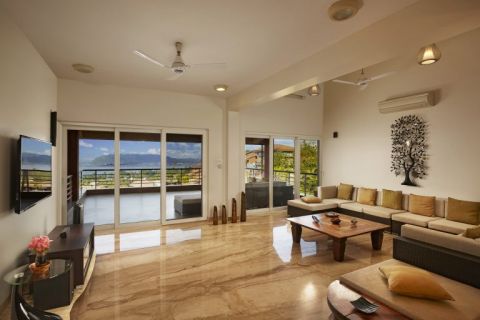Mumbai (MMR) and New Delhi (NCR) Comparison of Real Estate Performance by ANAROCK Property Consultants
To understand NCR and MMR’s real estate performance, one needs to delve into recent housing data and its analysis. In supply terms, both cities have witnessed a sharp decline in the number of new housing launches. NCR added approximately 5,790 units in Q3 2019 against 13,570 units in Q2 2019 - a massive decrease of 57%.
MMR fared better in comparison and saw the launch of around 14,040 units - a decline of nearly 39% q-o-q and 29% y-o-y. Interestingly, the affordable category dominated supply in both cities, contributing 64% to overall launches in NCR and 40% in MMR.
Another barometer to compare the real estate performance of both cities is absorption and NCR and MMR have both borne the brunt of the overall economic slowdown. External factors like the ban on subvention schemes and poor market sentiments impacted housing sales in both cities, but MMR performed relatively better.
Sales have continued to decline for six consecutive quarters in NCR, decreasing by 22% - from 12,640 units in Q2 2019 to approx. 9,830 units in Q3 2019. MMR fared slightly better in Q3 2019 with nearly 17,180 units sold during the quarter, a 20% decline from Q2 2019.
Interestingly, on a yearly basis, MMR saw the least decline amongst all top 7 cities at 6%, while NCR recorded a 13% annual decline.
In terms of shedding unsold inventory, NCR has fared better than MMR. Delhi saw its unsold stock decline 7% y-o-y from 1,90,650 units in Q3 2018 to 1,77,900 units in Q3 2019. MMR, which leads the stock on unsold inventory across top cities, registered a minimal annual decline of 1% - from 2,23,130 units in Q3 2018 to 2,20,870 units in Q3 2019.
Delhi-NCR Scores High on Affordability
One of the biggest differences in the real estate offerings of both cities is in pricing and affordability. Capital values of property show a stark difference in both cities. While the average base selling price per sq. ft. in NCR is pegged at INR 4,565 per sq. ft., this is more than double in MMR at INR 10,610 per sq. ft.
In fact, Mumbai continues to be the most expensive market in the country where even a hefty budget of INR 2 Crore is not sufficient to buy a spacious house in upscale neighbourhoods like Bandra and Andheri.
This budget can get you a two or three-bedroom apartment in many parts of NCR such as Noida, Indirapuram, Dwarka Expressway and Gurgaon. Scarcity of land continues to plague Mumbai where real estate development has, by necessity, only been vertical. Moreover, the city is hemmed in by the sea from three sides and can only grow northwards. Delhi faces no such issues and the NCR region - and its real estate - continue to expand and grow in a radial pattern.
Towards More Transparency and Affordability
For many years, NCR’s real estate market was traditionally more investor-driven than MMR, where end-users dominated. In the recently regulated environment under RERA (the Real Estate Regulation Authority) speculators have taken a backseat in both markets. Both markets are becoming more transparent. Both cities are also working on better infrastructure and road networks.
With a mammoth budget of INR 16,909 Crore, Mumbai Metropolitan Region Development Authority (MMRDA) has allocated sizeable funds for the development of new metro lines, the Mumbai Trans Harbour Link, Virar-Alibaug Multi-Modal Corridor and extension of arterial roads.
Going forward, prices in both cities are likely to remain range-bound until the unsold inventory declines significantly and the overall sentiments improve. While there may be no clear winner in the Delhi vs Mumbai debate, most properties in NCR are more affordable and MMR provides a safer environment for its residents.
